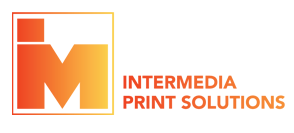April 17, 2025
Businesses rely on printing more than they realize—whether it's product packaging or other marketing materials. But when it's time to place an order, one of the first questions asked is, "How much does printing cost?"
The truth is that printing prices can vary significantly depending on factors like materials, order volume, and customization. A simple batch of flyers will cost much less than brochures and custom-printed packaging with specialty finishes. You can easily underestimate your budget if you don't understand what drives these costs and incur unexpected expenses.
In this guide, we'll break down the top factors that affect printing prices and share tips to help you plan your next project while maximizing value.
5 Key Factors That Affect Printing Costs
The cost of printing is influenced by multiple variables, not just the type of product printed. Understanding these factors can help you choose how to optimize your budget and get what you need. Here's a breakdown of the most significant cost drivers:
1. Type of printing method
Different printing methods come with varying costs, depending on the project's scale and requirements.
Offset vs. Digital printing - Offset printing is a traditional method that transfers ink from metal plates to a rubber sheet before applying it to paper. This method makes it ideal for high-volume printing with consistent quality. In contrast, digital printing directly prints from a digital file onto paper, offering flexibility, but only for short runs and variable data printing.
Depending on your need, offset printing is more cost-effective for large print runs due to lower per-unit costs but requires upfront setup expenses. Digital printing is ideal for smaller runs, allowing on-demand printing with minimal setup fees.
- When to use Screen, Flexographic, or Large-Format printing - Silkscreen printing is best for apparel and some promotional products, while flexographic printing is widely used for packaging and labels. Meanwhile, large-format printing is essential for banners, posters, and signage.
Intermedia Print Solutions supports various specialized printing methods, ensuring high-quality custom printing for businesses of all sizes. Whether you need labels and packaging or large-format signage, our expertise and cutting-edge technology deliver precision and durability.
2. Paper type and quality
Different paper stocks impact printing costs due to their quality, durability, and finishing. For example, coated paper in glossy or matte finishes enhances color vibrancy and is commonly used for marketing materials. It tends to be more expensive than lightweight, uncoated copy paper. However, premium uncoated papers can cost nearly twice as much as coated papers.
3. Color vs. black and white printing
Color printing costs more than black and white because it uses more ink, especially for high-resolution images. Studies show that a color print can cost up to four times more than a black-and-white print, depending on page coverage and ink or toner use.
CMYK printing is the most cost-effective option for most projects since it blends cyan, magenta, yellow, and black inks to create colors. On the other hand, Pantone (PMS) printing ensures precise color matching but costs more due to specialized inks and additional setup.
4. Print quantity and bulk discounts
Printing in bulk typically lowers the cost per unit because setup expenses are distributed across more prints. If your materials have a long shelf life and don’t require frequent updates, bulk printing can be a cost-effective choice.
However, the benefits still depend on finding the right balance between ordering enough to be considered bulk and not wasting anything you have printed, especially when you encounter print changes.
Assess your long-term needs and determine the tipping point where your bulk order gives you what you need without excess inventory.
5. Customization and finishing options
Adding special finishes like embossing, foil stamping, UV coating, and die-cutting can make prints stand out but can also increase costs.
These embellishments give your print a high-end look, which is excellent for branding and premium packaging, but also consider your budget. Investing in these finishes can be worthwhile if you want a strong first impression. However, keep it simple for everyday prints.
How to Estimate and Optimize Printing Costs
Planning for printing costs helps businesses stay within budget, avoid unexpected expenses, and get the best return on investment. Here's how to estimate and optimize your printing expenses:
1. Define your printing needs
First, identify what you're printing. What do you need? Flyers, business cards, packaging, or signages? There are different printing needs, and each has its requirements. The project type affects pricing, as distinct materials and printing methods cost differently.
Also, consider whether your needs are a one-time order or something you'll need regularly. If you print frequently, you may be able to save with bulk pricing or long-term agreements.
2. Get quotes from printing providers
The wise choice is to cover all your bases and compare and estimate printing costs from various providers. This strategy helps you find the best balance between price and quality. Some things to ask are turnaround times, material options, and bulk discounts.
A trusted provider like Intermedia Print Solutions can guide you through your options and recommend the best approach to meet your needs and budget.
3. Consider long-term cost savings
Sometimes, the cheapest option isn't the most cost-effective. Think about mass-manufactured items and how easily they break. Lower-quality materials may lead to frequent reprints, costing more in the long run.
Invest in durable materials and high-quality printing to ensure quality prints.
4. Use cost calculators or consult a print expert
Online pricing calculators can give you a rough estimate but don't always factor in customization, unique finishes, or bulk savings. Talking to a print expert ensures you get accurate print costing and estimating, helping you get the best value for your project.
The Right Prints at the Right Price
Printing goes beyond ink on paper. It builds trust, grabs attention, and strengthens your brand. By understanding what drives printing costs, you can make wiser financial decisions and avoid unnecessary expenses. This way, you get the most value from your print projects. Remember, every choice plays a role in your bottom line.
A well-planned print strategy ensures your materials look professional, align with your brand, and leave a lasting impression. Working with a reliable print partner can make all the difference.
At Intermedia Print Solutions, we lay out a business' options, optimize their budgets, and bring their ideas to life—without overspending. Ready to get the best value for your next print project? Explore our product center or request a quote today!


